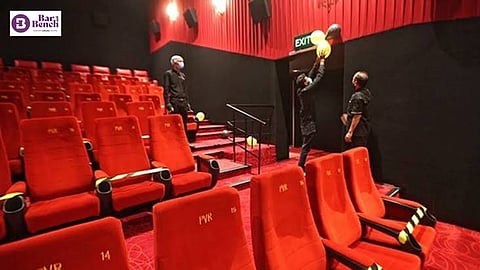Courtrooms on screen: How Hindi cinema shapes (and skews) public perception of law
“Tareekh pe tareekh!” roared Sunny Deol in Damini - a line so iconic that it outlived the film itself. Hindi cinema has long held a fascination with courtroom drama, filled with morally upright lawyers, theatrical judges and confessions that crumble under moral pressure.
But behind the rousing monologues and dramatic verdicts lies a quieter, more frustrating truth: the Indian legal system is slow, nuanced and procedural. This article explores how Bollywood’s portrayal of the law influences public perception, and whether these representations do more harm than good.
Hindi films like Jolly LLB and Section 375 have attempted to portray the legal world with greater complexity, but even these more grounded narratives end up leaning into cinematic tropes. The courtroom often becomes a space for moral lectures rather than structured argument. In Talvar, based on the Aarushi Talwar case, the film delves into prosecutorial failure, media bias and the confusion of multiple narratives - all of which are true to life. Yet, even this film ends with a sense of finality that real-life litigation rarely offers. Similarly, Article 15 frames a legal crisis rooted in caste discrimination, but resolution is once again tied to the will of one man, not to institutional reform or legal recourse.
This phenomenon isn't limited to films. Streaming series like Criminal Justice, Guilty Minds, and the lighter Maamla Legal Hai have explored courtrooms with varying tones - from gritty realism to satirical comedy. Guilty Minds, in particular, presents a rare attempt to depict courtroom decorum and internal debates with some authenticity. Yet even here, cases are resolved faster than reality would permit. The audience sees the justice system not as a forum of patient procedure, but as a moral battlefield where the loudest or cleverest voice wins.
In the cinematic imagination, justice is quick, clear and often poetic. But the reality is painfully different. Delays, adjournments, procedural loopholes, understaffed benches and overburdened trial courts characterise the real system. While Sunny Deol’s outburst in Damini resonated with millions because it touched a nerve, few films are brave enough to show what that delay actually looks like: files lost in corridors, witnesses who never show and arguments postponed indefinitely.
Another recurring trope is the “hero lawyer” - a one-person army with a booming voice, an unshakable conscience and an impressive ability to cite case law without notes. This lawyer usually wins the case by exposing a surprise witness or delivering an impassioned speech that stuns the courtroom into silence. But real litigation is often about what happens outside the courtroom: research, drafting, negotiations and quiet strategy. There are no spontaneous “gotcha” moments. There is only preparation and persuasion.
Even the physical setting of courtrooms in films tends to be misleading. Judges are often shown interrupting dramatically, lawyers pace around freely and spectators gasp audibly - none of which is tolerated in actual proceedings. Legal practice, especially in India, values structure, civility and patience. The Law Commission of India, in its 245th Report, observed that public confidence in the judiciary is often distorted by cinematic and media portrayals, which can create unrealistic expectations and eventual disillusionment.
The bigger concern is this: when cinema becomes the public’s primary window into the legal world, it shapes not just what people think about law, but how they engage with it. Litigants expect fast-track verdicts. Law students idolise courtroom theatrics over clarity of thought. Citizens mistrust due process because it doesn’t align with the stories they’ve been told on screen.
Western media, too, indulges in similar romanticism—Suits, Criminal Minds and The Practice all feature lawyers with photographic memories and dramatic flair. But the difference is cultural: audiences abroad are more likely to separate fiction from fact. In India, where legal literacy is low, cinema fills a vacuum; and with that power comes consequence.
This isn’t to suggest that all legal films are flawed. Court (2015), a Marathi-language film that won international acclaim, offers a devastatingly quiet look at how the system grinds down the underprivileged. Guilty Minds deserves credit for showing lawyers wrestling with moral ambiguity rather than easy answers. Even comedies like Maamla Legal Hai touch upon real issues - clerk corruption, lack of infrastructure and overburdened junior lawyers - with satire that hits home.
Cinema doesn’t owe us an affidavit of truth. Filmmakers are storytellers, not stenographers of reality. But when these stories become the dominant way in which millions understand law, the burden shifts. There’s room for drama, but there’s also a need for realism; especially in a country where the courtroom is not just a setting, but a hope.
The real test for Indian legal storytelling isn’t whether it entertains, but whether it prepares. Not for the next film, but for the next hearing.
Aum Thakur is a recent graduate of Law Centre-II, Delhi University.

